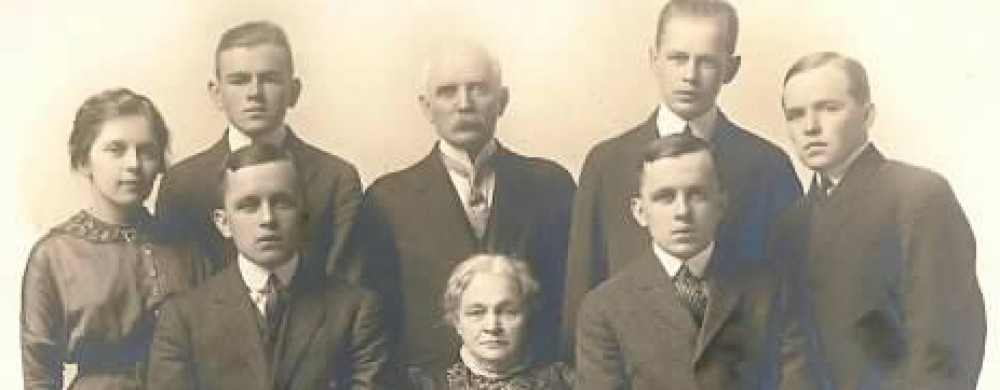This month is the 150th anniversary of the death of my Irish immigrant aunt, Hannah Roane (February 6, 1866), a Lowell mill girl. Never having married or had children of her own, the last vestige of Hannah’s existence disappeared 50 years later, in 1919, when her sister-in-law, Mary died. Mary was my ancestor, and the last person who might have recalled Hannah’s face, her voice, or a quirk that made her unique. While the essence of long dead relatives (with rare exception) remain mysterious, it is often possible to learn much about the lives they led, as is the case with aunt Hannah.
Born around the year 1828 in County Galway, Ireland, Hannah was a few years older than her two brothers, John and Patrick, who also came to the world-famous, textile manufacturing city. Their family suffered the nightmare of the “Great Hunger” (1845-1849), the years of nationwide starvation and disease that took a million lives, and sent another million Irish out into the world in a desperate longing for a better life.
At this time in rural Ireland’s history, one son would take over his parents’ land and cottage. The anointed one (and his wife and children) would work the land and care for the elders. Perhaps, one lucky daughter would have a dowry enough to make a decent marriage (to another family’s heir). All the other sons and daughters of typically large, Roman Catholic families were out of luck. If they didn’t opt to become a priest or a nun, they faced a monotonous, solitary, laboring life.
Perhaps, it’s not so surprising then, that young, unmarried, Irish women came in such great numbers to America. In contrast with women of southern European cultures, Irish women were traditionally independent, capable and the money managers of the family. Many women made the voyage to America alone, and earned passage money for family members left in Ireland. Earning that money was no piece of cake.
Hannah Roane was on the vanguard of the Irish immigrants who replaced the Yankee female textile workers (the first American women to work outside the home), whose numbers peaked in the 1870s. For fourteen hours a day, six days a week, men, women and children labored amid the intense, ceaseless noise of machinery and inhaling air-filled with cotton or wool fibers. [Woman at Loom – American Textile Institute]
There were strikes in the 1830s over terrible working conditions, and, in 1845, workers agitated for a 10-hour work day, – a fight they lost. After that factory work became much less popular with native-born women. Then (as now), immigrants arrived to take the difficult, low-status, and low-paying jobs abandoned by those who had other options.
There were ten large mill complexes in Lowell, among them, the Massachusetts, Merrimack, Appleton, Hamilton and Boott mills; I don’t know which one employed my aunt. In a state census for 1855, Hannah was a resident in a boarding house with 30 other women, most of whom were New England born. As an Irish immigrant, Hannah would have begun her career working the least desirable, lower-paying jobs in the carding and spinning rooms. There is evidence that Hannah advanced in her career, however; in 1858, she opened an account with the Lowell Institution for Savings and listed her occupation as weaver, which was a skilled and better paying position.
I like to think that Hannah was among the Irish “mill girls” who spent some of their hard-earned on themselves and were considered good dressers compared to their Yankee counterparts.
Ten years after I first found Hannah in Lowell, her single working life-style had altered. The 1865 census lists 35-year-old Hannah in the household of her brother, John Roane, who ran a grocery business to support his wife, two sons and an infant girl. Hannah was enumerated as an operative (mill worker), but her death, just months after this census, makes it likely that she was, in fact, too sick to work. She died of tuberculosis.
For all her independence, courage, and endurance required to toil in the mills, the only blessing Hannah may have had in her brief sojourn on Earth, was to have been cared for, and to have died among family.
It is good to know Hannah had loved ones near in the end, and I would love to salute her memory and leave it at that, but for one sneaking suspicion, – I think that Hannah was “patient zero” for the contagion that nearly wiped out the family in Lowell.
Three years after Hannah’s passing, John Roane succumbed to an illness evidence suggests, almost certainly, was tuberculosis. Of John’s three children who lived into adulthood, two died of tuberculosis. What’s more, a few years after John died, the widow Mary, remarried and gave birth to two more sons, who both died of tuberculosis.
Hannah certainly left lasting memories of love and laughter in the hearts of her brother’s family, but she may also have left them a tragic legacy.
Notes | Sources | Resources
Images: University of Massachusetts Lowell; http://library.uml.edu/clh/All/mgi06.htm; http://library.uml.edu/clh/All/mgi01.htm
Erin’s Daughters in America; Hasia R. Diner, 1983.
Mill Girls of Lowell; Jeff Levinson, Editor, 2007.
Living on the Boott – Historical Archaeology at the Boott Mills Boardinghouses, Lowell, Massachusetts; Stephen A. Mrozowski, Grace H. Ziesing, and Mary C. Beaudry, 1996.
Women at Work – The Transformation of Work and Community in Lowell, Massachusetts, 1826-1860. Thomas Dutton, 1979.
Living in the Shadow of Death – Tuberculosis and the Social Experience of Illness in American History; Sheila M. Rothman, 1994.

